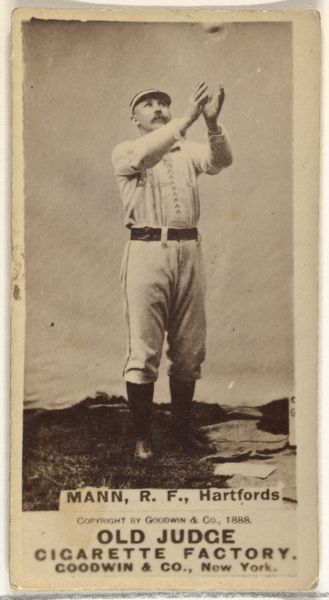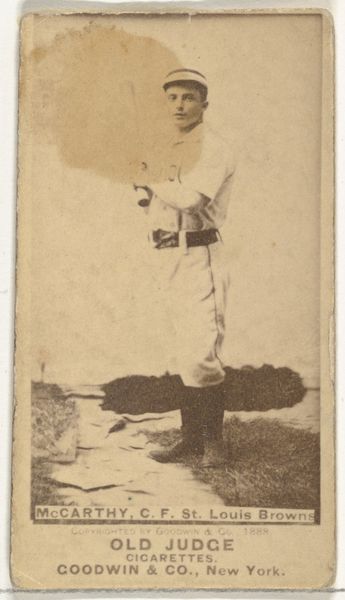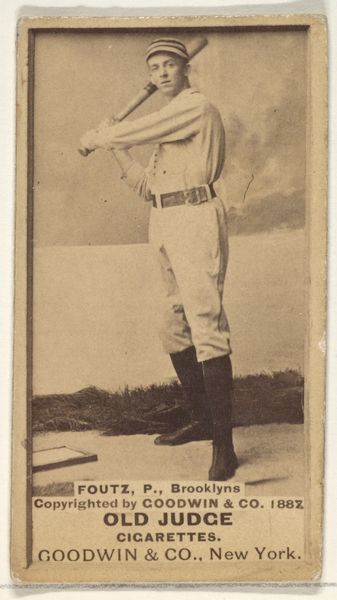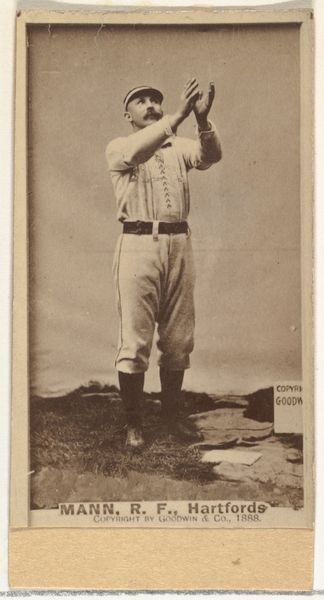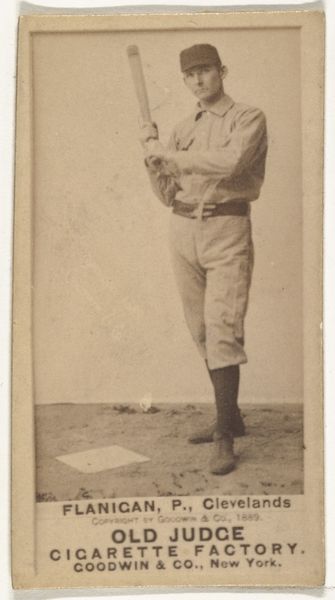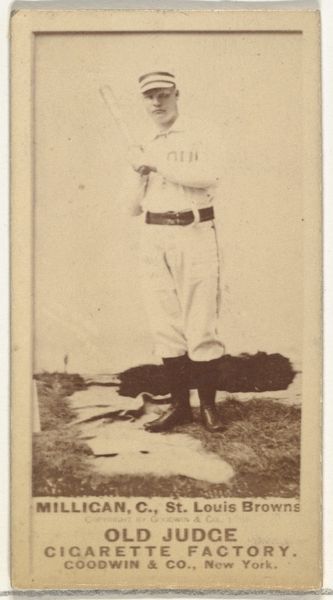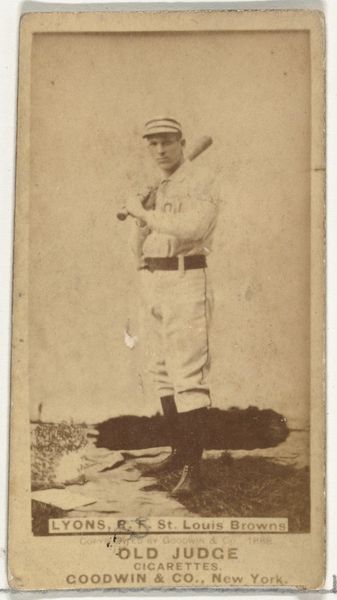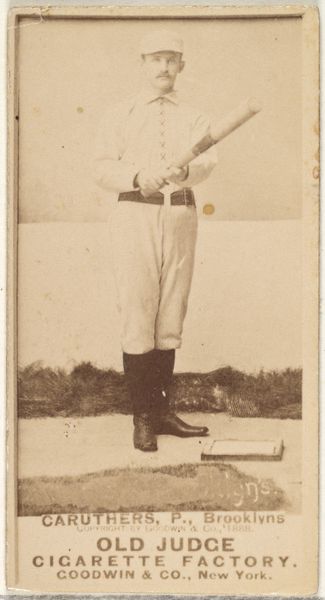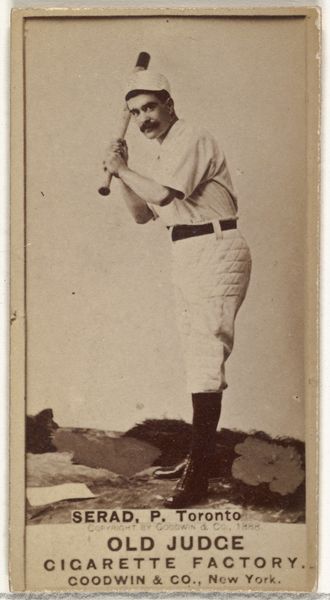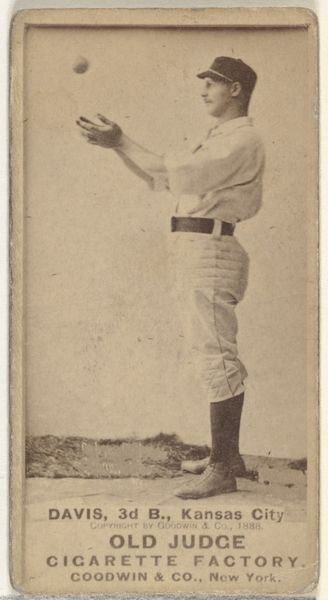
Nathaniel P. "Nat" Hudson, Pitcher, St. Louis Browns, from the Old Judge series (N172) for Old Judge Cigarettes 1888
0:00
0:00
drawing, print, photography, collotype
#
portrait
#
drawing
# print
#
baseball
#
photography
#
collotype
#
genre-painting
Dimensions: sheet: 2 11/16 x 1 3/8 in. (6.9 x 3.5 cm)
Copyright: Public Domain
Curator: Let's consider this 1888 collotype portrait of Nathaniel P. "Nat" Hudson, a pitcher for the St. Louis Browns. It's part of the Old Judge series by Goodwin & Company, originally produced for Old Judge Cigarettes. Editor: It’s interesting. There's a kind of starkness, even an unsettling quietness to this image. Despite being a sports figure, he seems strangely still, almost posed like a historical daguerreotype rather than a contemporary action shot. The sepia tone amplifies this effect. Curator: Precisely. We have to examine it in the context of late 19th-century constructs of masculinity and commodity culture. Hudson, like many athletes then, was being presented as a symbol – not just of sporting prowess, but of aspirational American identity intertwined with consumption, specifically tobacco. Editor: Agreed. And I see the baseball card itself, mass-produced through collotype, becomes a miniature commodity, a signifier of industrial production and leisure consumption bundled into one. Think of the labor that went into each of these cards. Curator: Absolutely. Goodwin & Company profited handsomely by leveraging these athletes’ images to fuel cigarette sales. Hudson's stoic image is carefully constructed to project an ideal, a consumable ideal connected to notions of success and health, ironically, when tied to cigarette usage. This commercialization extends to hyper-masculine ideals and their connection to an increasing number of sporting audiences and professional athletes, subtly reflecting power dynamics linked to gender and consumerism. Editor: But the focus on materials raises questions about class as well, doesn’t it? Baseball at this point was aiming at a broader audience. This wasn’t the elite game of cricket but was the people’s game. The cheaper production methods of the baseball cards allowed for more consumption of imagery, even if access to cigarettes wasn’t widespread or possible. Curator: Right. Consider this "democratization" of access. The cards become a tool for fostering broader baseball enthusiasm that obscures economic realities and reinforces an ideology. It's an example of sport working alongside broader consumerist forces. Editor: Thinking materially, this baseball card is a product that creates a certain type of cultural obsession. I never thought a tiny little material thing like this could open up into such vast questions. Curator: Exactly! The study of sport, even through a tobacco card, gives voice to histories that illuminate how identity is not passively inherited, but actively shaped by commercial forces, media, and our own aspirations.
Comments
No comments
Be the first to comment and join the conversation on the ultimate creative platform.
